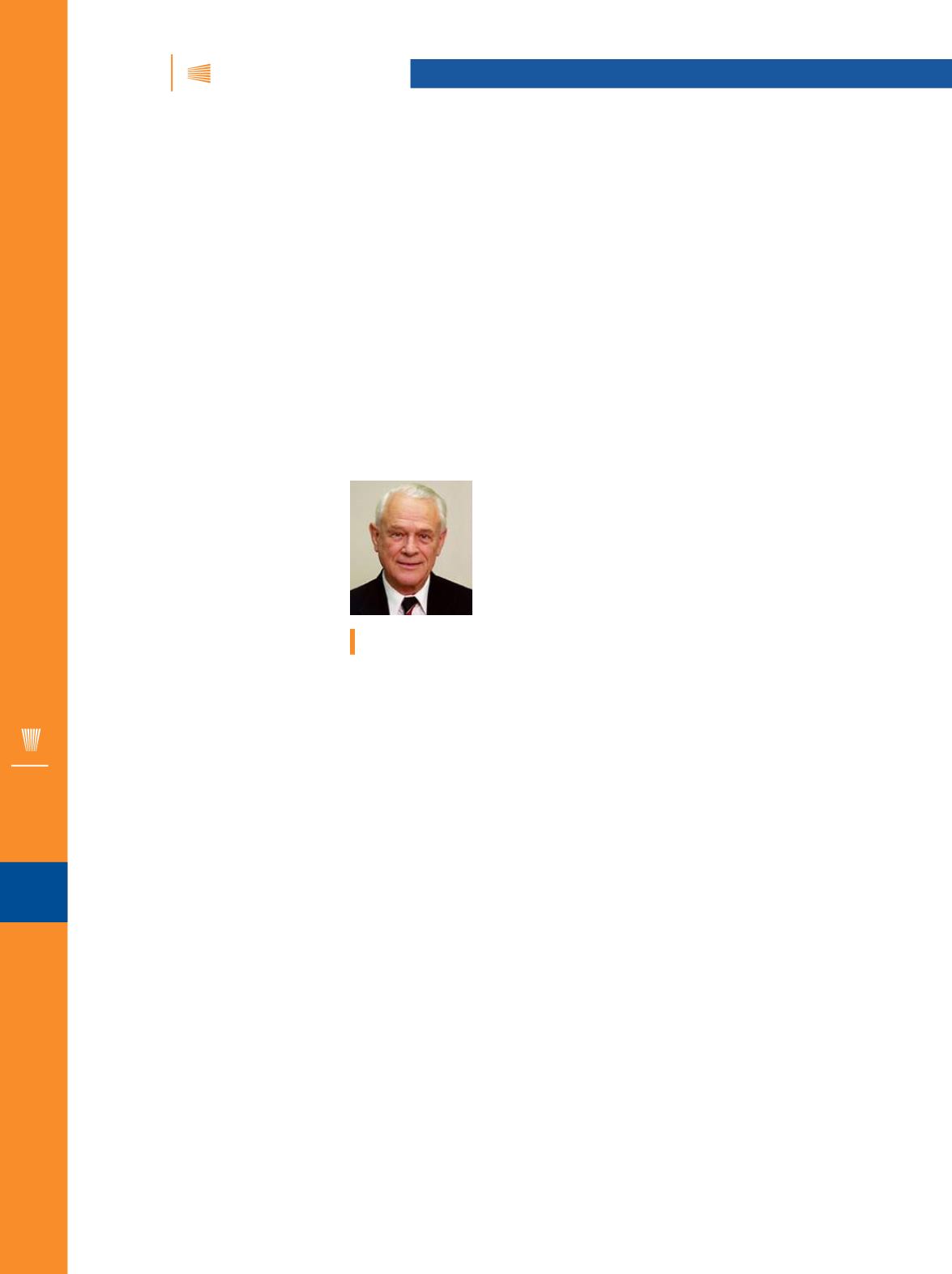

EDITORIAL
iTSSe
TSS
A D V A N C E D M A T E R I A L S & P R O C E S S E S | A P R I L 2 0 1 6
4 2
iTSSe
TSS
4
SOCIETY NEWS
Advanced Thermal Spray Technology
Date: July 28
Location: ASMWorld Headquarters, Materials Park, Ohio
Instructor: Chris Berndt, FASM
Thermal spray is increasingly used to manufacture net
shapes, advanced sensors, and materials for the biomedical
and energy/environmental industries. These and a vast ar-
ray of emerging applications take advantage of the rapid and
cost-effective capabilities of thermal spray technology in the
OEM and repair industries.
TRIBUTE TO A THERMAL SPRAY PIONEER:
EMIL PFENDER
MAY 25, 1925—JANUARY 28, 2016
Maher Boulos, University of Sherbrooke, Québec, Canada, and
Pierre Fauchais, University of Limoges,
France
The Thermal Spray Society mourns
the passing of Emil Pfender, Professor
Emeritus at the University of Minnesota.
Pfender was a leading member of the
thermal spray community and contrib-
uted immensely to our understanding of
the scientific foundations of this rapidly
developing field. He was a Fellow of the
ASME (1981) and member of the National Academy of Engi-
neering (1986). Pfender was also the recipient of many hon-
ors by leading scientific societies including the Alexander von
Humboldt Award of the German Government (1978), the Gold
Honorary F. Krizik Medal for Merit in the Field of Technical Sci-
ences of the Czech Academy of Sciences, an Honorary Doctor’s
degree from the Technical University of Ilmenau, Germany,
and the prestigious Plasma Chemistry Award, then given by
the International Union of Pure and Applied Chemistry (1995)
for lifetime achievement in plasma chemistry.
Pfender was born on May 25, 1925, in Dietershausen, a
small farming village in southern Germany. He earned his di-
ploma in physics in 1953, and Dr. Ing. in electrical engineering
in 1959, both from the Technical University of Stuttgart, where
he became chief assistant and lecturer at the Institute for Gas-
eous Electronics. In 1961, he spent a year as a visiting scientist
at the Plasma Physics Branch of the Air Force Research Labo-
ratories at Wright Patterson Air Force Base near Dayton, Ohio.
In 1964, Pfender was recruited to direct the High Temperature
Laboratory, now the High Temperature and Plasma Laborato-
ry (HTL/HTPL), in the department of mechanical engineering
at the University of Minnesota. He joined the department as an
associate professor and became professor in 1967. Under his
leadership the HTL/HTPL grew to become one of the world’s
leading centers in the field of plasma science and technology
with four faculty members and over 20 graduate students, re-
search assistants, and several postdocs and visiting scientists.
As colleagues and friends who had the privilege of work-
ing closely with Pfender for more than four decades since the
1970s, we would like to share with the thermal spray commu-
nity our thoughts and fond memories of this period and point
out the importance of his contribution to thermal spraying and
thermal plasmas in general. His contributions can be found in
three distinct areas:
•
Fundamental research of fluid dynamics and heat
transfer under plasma conditions using direct current
(DC) and radio frequency inductively coupled plasma
sources. The topics studied by Pfender varied widely
from electrode phenomena and DC torch design for
plasma spraying and cutting, modeling, and diagnostics
to thermal spray coating applications, chemical vapor
deposition, and nanopowder synthesis.
•
Training of young scientists who completed their mas-
ter’s and Ph.D. degrees in this field under his supervi-
sion. He was also an active participant in a large number
of continuing education courses, which we jointly of-
fered together for many years (1981-2001) in conjunction
with the international conferences of the Thermal Spray
Society and the biannual International Summer School
and Symposium on Plasma Chemistry.
•
Consulting and engineering services offered to the
industrial community on an international scale contrib-
uting to their advancement in the integration of thermal
plasmas in their process technology. These were offered
either individually or through our joint International
Thermal Plasma Engineering Corp., which was active in
this field over the period of 1983-1995.
In terms of specific technical achievements, it is a chal-
lenging task to attempt to point out a single or specific accom-
plishment because Pfender devoted his research career to a
vast number of diverse topics to which he made significant
contributions. In terms of relevance to thermal spray technol-
ogy, it has beenwidely recognized that his study and proposed
model for the entrainment of cold gas into thermal plasma jets
by Pfender, et al., (1991) had a significant impact on this field.
Few university professors have had the influence of Emil
Pfender on the fundamental science of thermal plasmas, torch
optimization, and their applications—especially on plasma
sprayed coatings. All of us who had the chance to know him
will always cherish the memory of these moments. Through
his publications, students, and colleagues, his works on ther-
mal plasmas will continue to guide us in this field.
Pfender


















